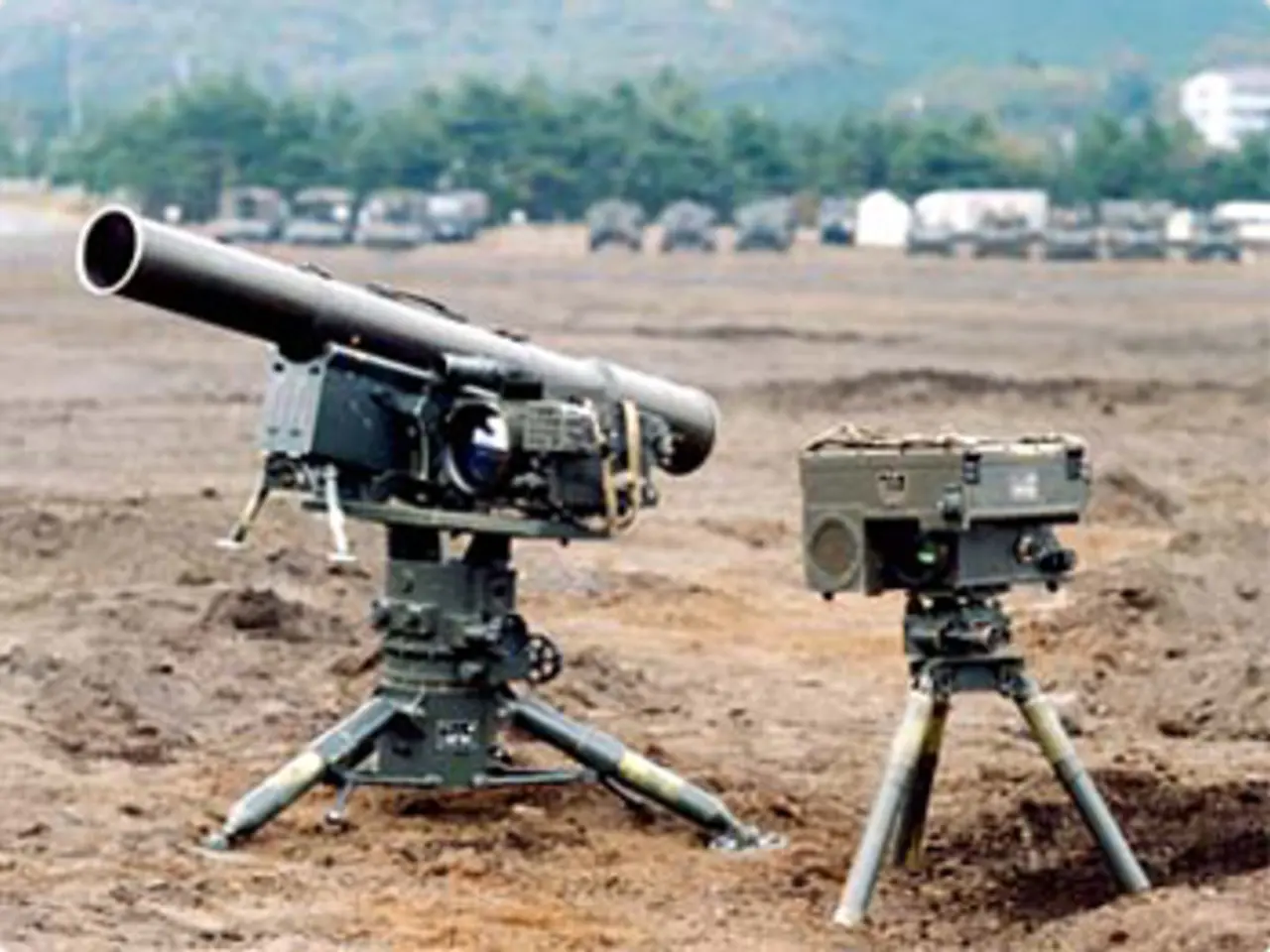U.S. issues order for 2,000 missiles to obliterate untraceable jets and hypersonic technology at an altitude of 118,000 feet.
Lockheed Martin Wins $9.8 Billion Contract for PAC-3 MSE Interceptors
Lockheed Martin, a leading defence technology company, has been awarded a substantial contract worth $9.8 billion by the US Army to produce nearly 2,000 PAC-3 Missile Segment Enhancement (MSE) interceptors. This contract marks a significant milestone in the company's production capacity, with production expected to reach 650 units per year by 2027.
The PAC-3 MSE interceptor, designed by Lockheed Martin, is equipped with an active onboard radar seeker in the missile's nose, providing autonomous target acquisition in the terminal phase. This advanced technology ensures the interceptor's effectiveness against a wide range of threats.
The PAC-3 MSE has found favour with seventeen nations, including Germany, Japan, Poland, South Korea, Sweden, Spain, the United Arab Emirates, and Qatar. The interceptor's versatility and reliability have made it a valuable asset in the global defence landscape.
The PAC-3 MSE is designed to interoperate with other US and allied systems such as THAAD, Aegis combat system, F-35 fighter data networks, Integrated Battle Command System, and the Army's new Lower Tier Air and Missile Defense Sensor radar. This integration enables the PAC-3 MSE to work seamlessly within existing defence infrastructure.
The PAC-3 MSE has been combat-tested in live engagements and deployed across multiple theaters, including Europe and the Middle East. Its robust performance and reliability have been consistently demonstrated in various operational environments.
The PAC-3 MSE employs "hit-to-kill" technology that destroys incoming threats through direct collision rather than explosive fragmentation. This technology ensures minimal collateral damage and maximises the interceptor's effectiveness.
The PAC-3 MSE offers roughly 50 percent more range and maneuverability than earlier models, making it a formidable air defense solution. It can hit targets up to 75 miles (120 kilometers) away and at altitudes of 118,000 feet (36 kilometers).
Lockheed Martin expects to deliver more than 600 interceptors in 2025, a first for the company. This increased production is in response to surging demand and the growing emphasis on layered defense solutions in an environment where adversaries are fielding increasingly complex missile threats.
To meet this demand, Lockheed Martin is expanding production. Spain has joined the PAC-3 MSE program as an industrial partner, contributing components through local suppliers. This collaboration will further bolster the company's production capabilities.
The PAC-3 MSE helps US and allied forces protect important sites, military personnel, and civilian communities from aerial threats. Its advanced technology and versatility make it an invaluable asset in maintaining global security. The PAC-3 MSE is indeed the world's most advanced air defense missile.








